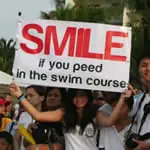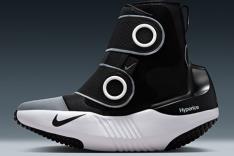The reason you should ignore the wind is because if you make the mistake of riding too hard into a headwind or easier with a tailwind, the cost of those mistakes will have a lasting impact on your performance on the run. Stick to your plan for pacing instead of trying to strategize around the wind will give you better results than trying to change your plan at the last minute.
This is why extended, one-direction sections of bike courses are particularly dangerous: If make the mistake of riding a little too hard into a headwind on the Beeline Hwy at IRONMAN Arizona, for example, you'll make that mistake for 9 miles, and you risk a disaster occurring on the run.
#3: Maintain a Reserve for Later in the Race
One constant of every IRONMAN course is that conditions become tougher as you get later in the day: temperature, winds and fatigue will increase as the clocks ticks on. Once the race gets hard, you'll have fewer energy reserves with which to respond. The result on the bike is that you'll sit up and slow down, whether it's a headwind, a tailwind or a crosswind.
For this reason, proper pacing in the first two hours of the bike is especially important on windy courses. This will decrease the potential of compromised aerodynamics later in the day when you're fatigued.
More: 5 Things I Learned in the Wind Tunnel
#4: Think Air Speed, not Ground Speed
In some situations, moving to a more aerodynamic position can making riding in windy conditions much easier to deal with—and it'll improve your overall speed. Here are a few examples:
Climbing into a headwind?
Your default riding position on a hill or any time when your speed drops under 12 to 13 mph is to sit up and ride in hoods. But if you're climbing a short 1.8-mile hill at 4 to 6 percent hill and at a speed of 9 to 10 mph, things can get complicated when a 20 mph headwind starts to blow in.
Without the wind, you might be better suited staying in your aerobars. Climbing in the aerobars has the add benefit of preventing a spike in your watts on a climb, which is a good thing. But if you're climbing with the wind, staying in the aerobars in extreme conditions might not be possible due to lack of speed and the inability to generate sufficient power output.
Feeling sketched by the wind, especially crosswinds?
All of us, at some combination of body size, wheel selection, crosswind, bike handling skills and cycling experience encounter crosswinds that make your nerves go crazy and require you to get out of the aerobars and ride on the hoods to maintain better control of the bike. That's fine, but we encourage you to remain low and aerodynamic on the bike as you can, hiding from the wind rather than creating a sail. The more exposed your body is to the wind, even a crosswind, the slower you'll go.
More: 6 Tips for Riding in the Wind
 Sign up for an IRONMAN.
Sign up for an IRONMAN.
- 2
- of
- 2
About the Author
Endurance Nation
A passionate and active community of age group triathletes, Team Endurance Nation is engineered to help each Team member not only reach the finish line, but to increase athletic speed and develop crucial raceday knowledge. What started in 2007 as two coaches and 80 athletes has grown to an active community of more than 800 members. Members come for the training plans and coach support, and stay for the community and unique Team Coaching experience. Start a free 7-day Trial Membership of Team Endurance Nation during our Open Membership Drive.
Work Hard. Get Smart. Go Fast.
Find out more at EnduranceNation.us.







Discuss This Article